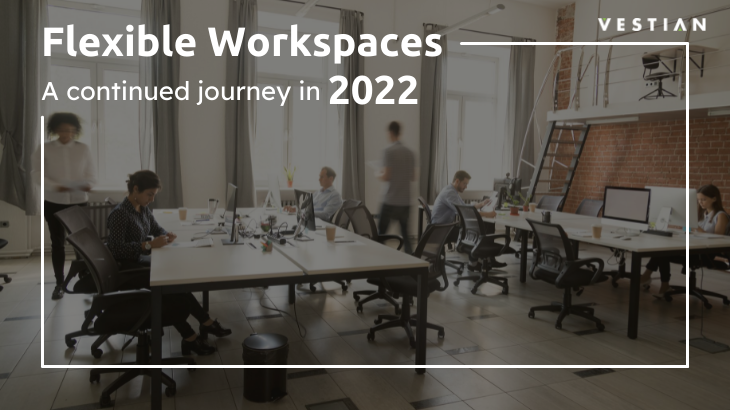The office market sector in India has been witnessing uncertainty for the most part in the past two years. It has taken several hard decisions and various strategic permutations on the part of the industry players to keep afloat and strive towards relative normalcy during the pandemic-induced hardship. One such approach that has been suitable for business continuity is, a shift towards flexible workspaces, where the corporate has a formal office set-up but with reduced real estate costs and overheads.
The rise, fall and measured resurgence of the segment
Largely constituting of co-working/managed office space operators, the flexible workspace segment has already made strong in-roads into the country’s office market, comprising of both global and local operators, thus making it fairly convenient for companies to make plans for such alternative office space arrangements. In the pre-pandemic period, during 2019, leasing in this segment was recorded at around 10.5 million sqft, up from 8.5 million sqft in 2018, primarily led by Bengaluru and Hyderabad. With 2020 witnessing severe constriction in office space absorption, flexible space leasing was noted at a subdued quantum of 3.8 million sqft, constituting 10.5% of the total absorption during the year. Operators of such space underwent considerable turmoil with occupiers holding active negotiations in the face of adversity, till mutual considerations were met to some extent and relative stability returned to the market by the end of 2020. 2021, a period marked by hope of a resurgence and yet marred by the impact of the pandemic second wave, witnessed the flexible workspace leasing clocked at nearly 5.8 million sqft, depicting a substantial 53% growth over the previous year’s figure.
What the new year holds
The year 2022, has begun with apprehensions regarding the Omicron variant and for the third continued year, companies would have to practice prudence in their growth plans, putting a halt to long-term office leasing plans. In the meantime, workplace dynamics have been evolving rapidly in the wake of the pandemic, with WFH arrangement turning contentious and giving way to hybrid work models as a preferred mode of working. With ‘hybrid’ approach expected to nurture employees’ prospects and enabling them to be productive irrespective of where they work from, landlords, developers and flexible workspace operators will thus need to adapt intently to occupier demands for increased flexibility.
There would be more demand for quality workspaces that are well-located and offer convenience to the employees besides a gamut of other facilities that promote well-being and hygiene. Undoubtedly, flexible/managed office space operators with their strategically located workspaces, would stand to gain from such demand. Further, of the major expectations related to office space occupancy this year, flexibility of lease terms will form the core of most deals, which would again work to the advantage of operators of such space. While flexible/managed office operators would continue to offer their products, the office market would see the advent of institutional investors and developers in this space, presenting similar lease options and capabilities. This development would eventually lead to competition heating up in the flexible workspace market.
Furthermore, the fragmented nature of the market – the consequence of an influx of smaller local operators entering the lucrative business – would eventually result in consolidations, given the constrained market situation. Larger players seeking to augment their geographical presence would acquire smaller players to cater to the varied demand of their tenants, most of them preferring to be located in facilities spread across a region/city for the convenience of their employees.
Emerging new facets
The real estate industry, today, has recognised its pertinent role in sustainable development and an increasing number of organisations are committing to ESG and net-zero goals. As we progress through 2022, companies would look towards occupying workspaces that support and adhere to such environmentally consistent guidelines. Thus, soon, we expect to see the flexible workspace segment gearing up to meet these imminent occupier requirements and move in the direction of improved work environment in the near future.
Summing up
To sum up, flexible workspace has today earned itself a key position in the office market scenario, chiefly by dint of its willingness to offer various levels of real estate flexibility and preferences that work for both tenants and landlords. Flexible workspace will continue to provide the required succour to many companies looking at keeping their businesses up and running from an office establishment, while keeping the operations and workforce agile. Further, digital transformation of workplaces holding the potential of leading to more project-based work, boding well for flexible space demand. Thus, continued strengthening of the flexible workspace segment during 2022 would expectedly lead it to occupy a sizeable portion of mainstream commercial real estate in the forthcoming period.
